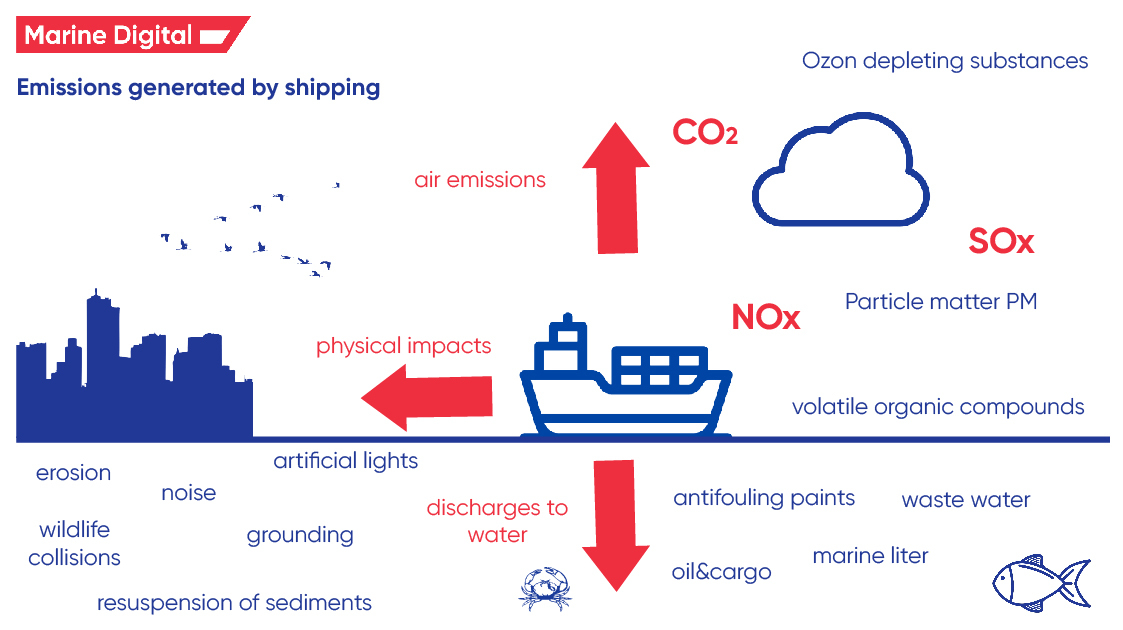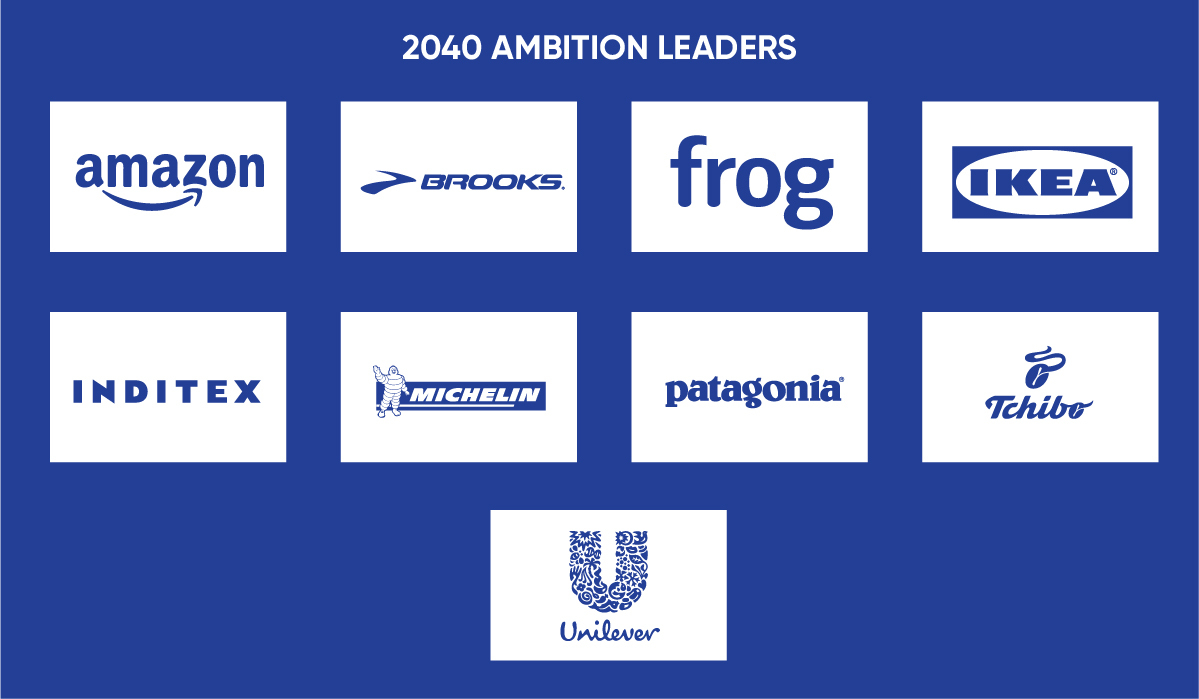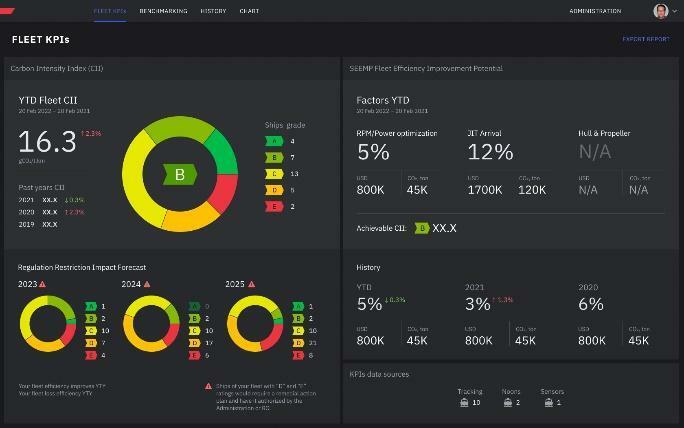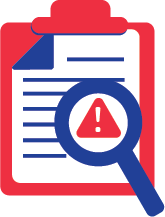Maritime Supply Chains: What Is The Impact on Climate Change
Emissions generated by shipping include sulfur oxides (SOx), nitrogen oxides (NOx) and carbon dioxide (CO2). How does this impact contribute to climate change? Who is in charge? And how to get reliable and trusted ESG data of maritime supply chains efficiency and sustainabiliy?
SOx
Marine fuels usually contain much higher sulfur compared to fuels used on land. According to analytics from the European Geosciences Union shipping is responsible for approximately 10% of the SOx emitted. Oxidizing in the presence of NO2 the smoke containing sulfur oxides forms sulfuric acid which is a major cause of acid rain. Moreover, the emission of SOx contributes in formation of harmful to humans secondary inorganic aerosol gases. The amount of SOx emissions is directly related to the sulfur content of the fuel.
NOx
Nitrogen oxides (NOx) are toxic gases which are formed by high-temperature combustion of fuels like oil, diesel and gas. Analytics at EGU estimated that the contribution of ship emissions to global emissions of NOx is about 15%. As a catalyst NOx contributes to acid rain and the formation of ground-level ozone, which can harm plants and wildlife. It can also lead to serious health problems with the lungs and respiratory system in humans. NOx formation mostly depends on combustion temperature of fuels.
CO2
The main source of CO2 emissions in ship operations is the combustion of fossil fuels in main engines, auxiliary engines, boilers and incinerators. CO2 emissions are absorbed by seawater, and cause direct harm to the oceans which generate up to 60% of the oxygen we breathe.
The maritime supply chains produce 940 million tonnes of CO2 annually and this accounts for 2.5% of the world's total CO2 emissions. In other words, if shipping were a country, it would be the sixth biggest carbon polluter (between Germany and Japan).
The complex interaction of SOx, NOx, and CO2
While it's clear how a combination of SOx and NOx impacts the environment it is important to highlight that immediate reductions of SO2 emissions will contribute to global warming unless CO2 is also reduced at the same time. Atmospheric SO2 plays an important role in global cooling processes. Transforming to sulfuric acid aerosols SO2 blocks incoming solar radiation and reflects solar heat. Decrease in sulfur can affect the complex interaction of SO2 and CO2 in global warming.
Marine fuels usually contain much higher sulfur compared to fuels used on land. According to analytics from the European Geosciences Union shipping is responsible for approximately 10% of the SOx emitted. Oxidizing in the presence of NO2 the smoke containing sulfur oxides forms sulfuric acid which is a major cause of acid rain. Moreover, the emission of SOx contributes in formation of harmful to humans secondary inorganic aerosol gases. The amount of SOx emissions is directly related to the sulfur content of the fuel.
NOx
Nitrogen oxides (NOx) are toxic gases which are formed by high-temperature combustion of fuels like oil, diesel and gas. Analytics at EGU estimated that the contribution of ship emissions to global emissions of NOx is about 15%. As a catalyst NOx contributes to acid rain and the formation of ground-level ozone, which can harm plants and wildlife. It can also lead to serious health problems with the lungs and respiratory system in humans. NOx formation mostly depends on combustion temperature of fuels.
CO2
The main source of CO2 emissions in ship operations is the combustion of fossil fuels in main engines, auxiliary engines, boilers and incinerators. CO2 emissions are absorbed by seawater, and cause direct harm to the oceans which generate up to 60% of the oxygen we breathe.
The maritime supply chains produce 940 million tonnes of CO2 annually and this accounts for 2.5% of the world's total CO2 emissions. In other words, if shipping were a country, it would be the sixth biggest carbon polluter (between Germany and Japan).
The complex interaction of SOx, NOx, and CO2
While it's clear how a combination of SOx and NOx impacts the environment it is important to highlight that immediate reductions of SO2 emissions will contribute to global warming unless CO2 is also reduced at the same time. Atmospheric SO2 plays an important role in global cooling processes. Transforming to sulfuric acid aerosols SO2 blocks incoming solar radiation and reflects solar heat. Decrease in sulfur can affect the complex interaction of SO2 and CO2 in global warming.
What you need to know about maritime supply chains emissions

According to international guidelines, shipping emissions produced when a vessel has a voyage between two countries are the responsibility of the UN's International Maritime Organization. When the ship sails between two ports of the same country, country level regulations are applied, including its reports to the UNFCCC regarding commitments made in the Paris Agreement (Nationally Determined Contribution).
In Europe, to ensure that the maritime transport sector contributes to the EU's increased climate ambition, the Commission adopted its proposal to extend the scope of the EU's Emissions Trading System to cover CO2 emissions from large ships (above 5000 gross tonnage), regardless of the flag they fly. The extension includes all emissions from ships calling at an EU port for voyages within the EU (intra-EU) as well as 50% of the emissions from voyages starting or ending outside of the EU (extra-EU voyages), and all emissions that occur when ships are at berth in EU ports.
The EU ETS was the world's first international emissions trading system and builds on the 'cap and trade' principle. A cap is set on the total amount of GHG that can be emitted each year by entities covered by the system. The proposal would cap maritime transport emissions as part of the overall ETS cap. It will push the industry towards decarbonization and energy efficiency as well as influence the price difference between alternative fuels and traditional maritime fuels.
At the same time in 2021 a group of climate-forward companies have announced plans to accelerate decarbonization of the global maritime shipping industry. The nine biggest global businesses including Amazon, Ikea and Unilever signed the ambition statement to only move cargo on ships using zero-carbon fuel by 2040. Global transport buyers hope their joined forces will push the heavily-polluting shipping industry to decarbonize faster. At the same time, it's a remarkable milestone that not only regulators and investors but cargo owners are in urgent need of monitoring and reducing their negative environmental impact in transportation.
In Europe, to ensure that the maritime transport sector contributes to the EU's increased climate ambition, the Commission adopted its proposal to extend the scope of the EU's Emissions Trading System to cover CO2 emissions from large ships (above 5000 gross tonnage), regardless of the flag they fly. The extension includes all emissions from ships calling at an EU port for voyages within the EU (intra-EU) as well as 50% of the emissions from voyages starting or ending outside of the EU (extra-EU voyages), and all emissions that occur when ships are at berth in EU ports.
The EU ETS was the world's first international emissions trading system and builds on the 'cap and trade' principle. A cap is set on the total amount of GHG that can be emitted each year by entities covered by the system. The proposal would cap maritime transport emissions as part of the overall ETS cap. It will push the industry towards decarbonization and energy efficiency as well as influence the price difference between alternative fuels and traditional maritime fuels.
At the same time in 2021 a group of climate-forward companies have announced plans to accelerate decarbonization of the global maritime shipping industry. The nine biggest global businesses including Amazon, Ikea and Unilever signed the ambition statement to only move cargo on ships using zero-carbon fuel by 2040. Global transport buyers hope their joined forces will push the heavily-polluting shipping industry to decarbonize faster. At the same time, it's a remarkable milestone that not only regulators and investors but cargo owners are in urgent need of monitoring and reducing their negative environmental impact in transportation.
Who is responsible for maritime supply chains emissions?

Read more about Why do huge Retail companies need greener ships
At Marine Digital, we know that without reliable and trusted data you can't make any systematic change in large industries. Therefore, having a strong focus and expertise in the maritime industry, we help all companies using ocean shipping and maritime supply chains to analyze, monitor and reduce GHG emissions & carbon footprint and implement decarbonization solutions as well as energy efficiency analyses.
Monitoring and managing GHG emissions and carbon footprint in extended value chains has become a strategic necessity for most companies. And inevitably, a lack of accurate ESG-data sources can be considered foregone business opportunities, overlooked carbon reductions, and unrealized financial savings.
To meet these challenges, we apply truly one-of-a-kind approaches to efficiency factor analysis aligned with the IMO Protocol and GHG Protocol methods. Accumulating one of the most complex data sets in the industry and applying digital twin technology powered with AI algorithms we are able to ensure the most accurate analytics to identify bottlenecks of the maritime logistics and assess environmental and economic risks for business sustainability.
Monitoring and managing GHG emissions and carbon footprint in extended value chains has become a strategic necessity for most companies. And inevitably, a lack of accurate ESG-data sources can be considered foregone business opportunities, overlooked carbon reductions, and unrealized financial savings.
To meet these challenges, we apply truly one-of-a-kind approaches to efficiency factor analysis aligned with the IMO Protocol and GHG Protocol methods. Accumulating one of the most complex data sets in the industry and applying digital twin technology powered with AI algorithms we are able to ensure the most accurate analytics to identify bottlenecks of the maritime logistics and assess environmental and economic risks for business sustainability.
How to measure environmental impact of maritime supply chains

You can learn more about Marine Digital ESG Solution here, or if you have any questions, contact our experts.


Feel free to address any questions on this topic to our expert

Get an overview "The Pathway to Zero Carbon Shipping:
IMO Compliance and CII Optimization through SEEMP" on email and download it for FREE! Leave your email now!
"Clicking the button, you consent to the processing of personal data and agree to the privacy policy, as well as consent to subscribe to the newsletter. "
Аdvantage of Fuel Optimization System from Marine Digital:

Marine Digital FOS can be integrated with other system and third-party's solutions through the API. To implement vessel performance monitoring for any vessel, we are using mathematical algorithms, machine learning and the same equipment as in FOS. The more data we collect from vessels, the more precise reports and recommendations our system will perform according to your individual requirements in fleet management.
If you have any questions about the solutions and the Marine Digital System platform, write to us, we will be happy to answer
If you have any questions about the solutions and the Marine Digital System platform, write to us, we will be happy to answer

Increased business process speed

Reducing to zero the number of errors

Best offer to the clients

Reduction in operating expenses
Have a questions?




